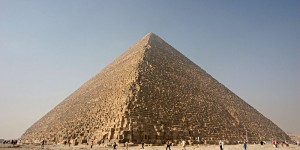Introduction
Memory is vital to creating and sustaining social identity which, if forgotten, can be permanently lost due its non-physical nature.
Monuments, the most permanent form of commemoration, were popular across multiple societies and time periods for a variety of reasons: to demonstrate different cultural ideas, show integration of cultures whilst maintaining clear links to homelands, or demonstrate social changes such as religious beliefs. However, their main purpose is to preserve memory through which social, familial and individual identity can be viewed. Non-physical commemoration, such as oral traditions, effigies, lists of the dead, and place names, can convey memory and sustain social identity. In the European Middle Ages, burial monuments were used on a smaller more intimate scale, though these were still very effective.
Throughout human history people have sustained social identity by ensuring its place in memory of future generations through commemoration. Moreover, such acts can allow the creators to decide the exact nature of their memory and how their identity is interpreted by future generations. This can be seen in various ways through three case studies: Anglo-Scandinavian and Viking culture, the Swahili Coast in Medieval Africa, and medieval Britain.
Viking and Anglo-Scandinavian Culture
The Vikings often utilised memory to create and sustain identity. When the Great Army arrived in East Anglia in 865 CE they often associated themselves with places of religious or economic importance to the Anglo-Saxons, such as Repton (Hadley and Richards 2016). At Repton, the Great Army appointed a new puppet king Ceowulf II and elsewhere, the Anglo-Saxon successors of Edmund of East Anglia minted coinage bearing Viking style hallmarks (Hadley and Richards 2016). This was deliberate: while the Vikings wished to be well provisioned during their stay, their actions regarding rulers and coinage demonstrated a clear desire to ensure that their presence in Anglo-Saxon England would be remembered, and so utilised the memory of Anglo-Saxon society (Hadley and Richards 2016). Additionally, the Viking style coinage in Anglo-Saxon society demonstrates a mingling of the two societies. The very selection of a site of Anglo-Saxon importance demonstrates the importance of both cultures and draws upon Anglo-Saxon identity in order to demonstrate and sustain Viking identity, but also create Anglo-Scandinavian identity.
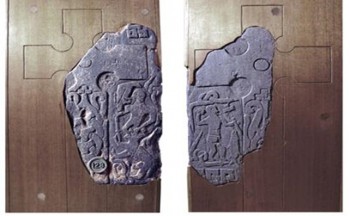
A more physical example of memory demonstrating intermingling social identities is Thorwald’s Cross (BBC 2018). This stone carving from the Isle of Man shows not only Norse iconography, such as the god Odin and the wolf Fenrir, but also Christian iconography such as the cross and a book (see Figure 1).
The intention behind this carving is to demonstrate Viking identity for future generations, but this is now clearly interlinked with the native Anglo-Saxon identity, thus leading to a more fluid Anglo-Scandinavian identity (BBC 2018). These monuments show that, despite interlinking with new cultures, identity is never completely destroyed but instead integrates and adapts into something new. In the case of the Vikings documentation was limited, and more or less belonged solely in the hands of the Anglo-Saxons. Had this documentation been the lens through which we could view Viking social identity, it may have been inaccurate and biased; archaeology provides the opportunity to examine Viking identity in a more neutral way. In Scandinavia itself, burial, funerary commemoration, and memory were important and interconnected. Burial sites not only commemorated the dead but could often play a role in society in some years to come, particularly with high-status burial mounds and chamber graves which later generations would utilise to visit the elite dead (Price 2010). Burials often suffer something of an archaeological bias in that more attention is given to high-status burials, but they often offer great insight into not just Scandinavian identity, but also power and the ways in which it is expressed. It is important to note, however, that Viking society had a variety of ways of commemorating the dead (Price 2014). Burial was not the sole choice of commemoration; indeed, there were many funeral spectacles, such as the ship burial intended to “emphasise the central importance of tales in the Norse world-view” (Price 2010). These “complex elements of mortuary theatre” were intended to further the memory of the deceased in the world of the living based upon the impressiveness of the funerary performance but had the dual purpose of “providing a poetic passage for the individual dead into a world of ancestral stories” (Price 2010).
According to Price (2014), despite funerals often being performances of power, they also focused upon the memory of the deceased as “such performances could relate to the dead, their family and community” alongside “broader tales of identity and (spiritual) history” often resulting in “unique funerary acts specific to the deceased.” Despite many high-status funerals being demonstrations of power, thus furthering the impact of the deceased and memory of them, the identity of the individual was also maintained. These impressive funerals did not only include the entire local community: in the event of high-status death, visitors both ordinary and elite alike would be expected. This would ensure that the deceased would be remembered far and wide, beyond the scope of the funeral itself: the event would be replicated in oral tales, thus sustaining the deceased’s social identity as a powerful figure (Price 2014).
Curiously in Anglo-Scandinavian Britain, despite monuments interlinking both Scandinavian and Anglo-Saxon social identity, evidence of Scandinavian style burials within a few centuries of settling are sparse (Richards 2007, 189). As a result, archaeologists have inferred that Anglo-Saxon style burials overtook that of the Scandinavian (Richards 2007, 205). This is perhaps a result of Norse and Christian beliefs being combined, as shown by Thorwald’s Cross (Figure 1). This is a demonstration of fluid social identity. Whilst memory was utilised to sustain social identity, Norse and Christian iconography interlinked in monuments and created Anglo-Scandinavian Britain, which was culturally distinct in its identity from both Anglo-Saxon and Scandinavian cultures.
The Medieval Swahili Coast
Memory was crucial to creating and sustaining social memory in the Swahili Coast in Medieval Africa. In the 14th Century, Islam had spread to the Swahili Coast; as such Shanga, a rich mercantile city, maintained a strong Islamic presence within its culture. This included integrating origin stories with their oral traditions, which would be passed down from generation to generation, stating that Islam in the Swahili Coast was started by Persian travellers in Medieval times. Later rulers would claim descent from these Persians (Insoll 2003, 150), despite having the area been settled since the 9th Century, and even linked Islam into their previous burial traditions.
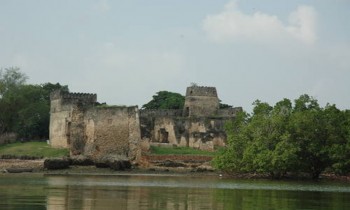
Due to the widespread acceptance of Islam, multiple ornate mosques were constructed such those as Kilwa Kisiwani and Songo Mnara. The Great Mosque at Kilwa Kisiwani is “the oldest standing mosque on the East African coast” (UNESCO 2018; see Figure 2). This was done to demonstrate the importance of Islamic identity within the Swahili Coast. The mosques are not only visible but were meant to be so for generations, designed to be permanently present in the memory of the landscape and the people surrounding it.
As with the Vikings, integration of burial methods took place through utilising memory to create and further the developing Islamic identity whilst simultaneously sustaining some of their initial identity. Islamic burial methods were intermixed and linked to prior burial methods and the notions of ancestor worship (Wilson 1979, 33). This perpetuated and created a new identity whilst simultaneously sustaining and linking to the widely accepted and practiced ancestor worship.
Evidence of this combination of practices can be seen by the presence of human remains surrounding mosques which are oriented towards Mecca, despite several native African inhumations and burials remaining present for many years after the arrival of Islam. Additionally, Islamic funeral practices instruct that burial should be simple, to denote equality in death across people and classes. However, there were many ornate tombs with pillars and spires which acted as monuments for the deceased. Wilson suggests that they “served to reinforce the prestige and to validate the authority of the family or lineage” (Wilson 1979, 34). This seems likely as, despite Islam being a strong force in the new social identity of the Swahili Coast, tombs were not only used to continue the memory of the traditional practices, but also the ancestors of the deceased (Wilson 1979, 34). This is because the tombs often contained symbolic doors or windows that were gateways to the world of the dead and a physical means of interacting with or paying homage to the deceased (Wilson 1979, 42). Both traditional Swahili burial and Islam were clearly dear to the community, and vital for furthering memory. Evidently the peoples of the Swahili Coast held onto such customs.
However, this intermixing of burial practices demonstrates that memory cannot just be used for creating but also sustaining social identity. The adoption of Islamic burial practices was a side effect of the widespread acceptance of Islam on the Swahili Coast. This aided its acceptance as did its integration into the oral traditions of the people of the Swahili Coast. However, initial practices, in particular ancestor worship, were sustained through memory and commemoration of the dead. Whilst ancestor worship was no longer linked to rights of kingship and political power, the tombs still acted as “supernatural authority” (Wilson 1979, 34) where family could go to pay their respects or gain comfort, and their presence allowed those on the Swahili Coast to maintain their independent identity. The inclusion of symbolic doors and windows in tombs, or monuments such as pillars (Wilson 1979, 41) was invaluable to maintaining the presence of ancestor worship and its role in the social identity of the Swahili Coast.
Medieval Europe
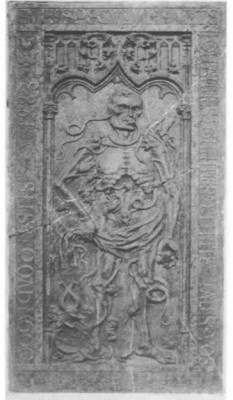
Memorial brasses, graves, and stone carvings for deceased ancestors were all popular forms of material memory for the Middle Ages in Europe (Roffey 2008, 154). However, these monuments were considerably smaller in scale than those used in Scandinavian society or on the Swahili Coast. As in the case studies above community social memory was present, however instead of entire cultures these now tended to focus upon noble and gentrified families. Commemoration in the later Middle Ages gradually became more widespread across the social classes, thus focusing less upon nobility (Saul 2002, 173). However, commemoration was key to religion, which permeated society in the Middle Ages. Many monuments reminded onlookers about the inevitability of death, such as transi tombs (Figure 3) depicting the deceased rotting, or other tombs and epigraphs which pleaded for others to pray for their souls and memory in order to escape Hell or time spent in Purgatory (Park 1995). The individualisation of tombs, monuments and commemoration was born out of desire to influence the memory of the deceased by the living (Saul 2002, 171). Whilst all forms of burial and commemoration are aimed at preserving identity, commemoration in the Middle Ages began a more personal and individualistic view of social identity (Saul 2002,187).
These new funerary monuments, such as the monumental brasses, interlinked both the living and the dead and were far more affordable than the earlier stone statues (Saul 2002, 173). According to Saul (2002), funerary monuments were popular as they could carry a longer, more explicatory epigraph (Saul 2002, 187). Effigies could also be used to sustain social memory (Roffey 2008, 187), often with quotes from or about the deceased, allowing them a final say in the world of living. These brasses, due to their affordability, were in demand by the sub-gentry, particularly wealthy merchants (Saul 2002, 175), as they not only commemorated the individual but reflected a communal identity by representing the deceased’s trade or other manner of employment (Saul 2002, 171). Due to their elite status they also reflected the wealth of the deceased and that of their family (Saul 2002, 185).
However, commemoration without monuments also became more commonplace in medieval Europe. There were Bede rolls listing those who had died in the previous few years, or lists of those who arranged for prayers to be said for their souls, such as that at the Fraternity of St. Nicholas (James and James 2018) which included a wide variety of people, from members of the nobility and high-ranking clergy but also “middle-ranking” clerks and their wives. These means of commemoration often focused more on specific individuals, but, as shown above, crossed classes far more than burial monuments which only the wealthy or high-status could afford (James and James 2018).
Just like the Bede rolls, ecclesiastical records in chantry chapels could also record the deaths of parishioners, thus ensuring their memory was sustained for future generations. At the end of each year the names would be said aloud in service and prayers offered for the salvation (Roffey 2008, 22). This allowed the less wealth to also utilise memory to sustain their social identity, and not solely through brasses or records. Fonts and pews in churches (Roffey 2007, 83) were recorded as provided by sponsors, and stained-glass windows (Roffey 2008, 59) preserved the likeness of the deceased for future generations to ponder upon. Not only did such actions preserve the memory of the deceased and their family, but also perpetuated the social identity of wealthy pious sponsors. This was crucial to identity and standing in the Middle Ages. When documentation or monumental commemoration was unavailable, families could pay for candles to be lit and prayers to be said both in memory of the deceased but also for the salvation of their soul (Roffey 2007, 13). Bede rolls, lists of the deceased and commemoration through prayers, and candles were relatively accessible for those with money to spare, and so would have been widely used across the social classes.
These forms of commemoration, whilst not prominent or overt, still sustained some social identity of the individuals and maintained their presence in their community for some years to come, while furthering their memory for more than just a few generations. Not only do the lists record a separate social group for posterity but they offer previously hidden glimpses into lives of the non-elites. Moreover, it is difficult not to notice the similarities between these “middle-ranking clerks” (James and James, 2018), merchants, and the middle class of the 18th century. Therefore, it not only reflected the deceased individual but also generally reflected the rising middling-class developing in the Middle Ages.
Discussion
Memory is vital to creating social identity, as shown in the examples above. Whilst monumental commemoration was an easy means of ensuring the preservation of identity in the memory of future generations, many new groups gained power and consolidation through associating themselves with something sacred, such as the Vikings in Repton, and the integration of Islamic settlement into Swahili origin stories. Islam was so strongly linked with identity on the Swahili coast that this origin was transcribed in the Kilwa Chronicle (Insoll 2003, 183) transferring the oral tradition into something that could be commemorated physically. This association with previously sacred places or traditions made the unknown more acceptable, and thus was more easily integrated into social identity as the newer group would call upon the traditions, such as the original religion, to be integrated. This ensured a lasting presence in the memory of future generations. The intermingled culture would form a new social identity which was expressed, created and sustained through memory. Commemoration through memory, physical or otherwise, allowed social groups to dictate how their social identity would be sustained for generations.
In medieval Europe, monumental commemoration continued for the elite but became more individualistic, such as the transi tombs, or epigraphs upon graves and brasses clearly meant to display the individual’s personality and identity. However, commemoration was not limited to the elite but could be found for the less wealthy, such as the Bede roll of the clerks at Fraternity of St. Nicholas (James and James 2018) but also sponsored pews and fonts in church (Roffey 2007, 83), or lists of the deceased (Roffey 2008, 21). Preserving memory was not limited to physical commemoration as prayers and candles for the deceased were not uncommon in the Middle Ages, employed by wealthy and poor alike. Commemoration for the less wealthy in Scandinavian and Swahili cultures likely took place, but little evidence has been found. Medieval Europe was noteworthy for how society responded to and managed death and memory, particularly in the increasing personalisation of commemoration and memory.
These acts of commemoration sustain social identity because they keep the memory of the subject present in society’s mind. In the event of massive cultural changes such as the fall of the Viking culture in Britain, the social identity can often be lost, particularly if it was sustained solely by non-physical commemoration such as oral tales or prayers (Price 2014). However, that does not ensure their absence. Myths can often switch cultures and be passed down over the years, while monuments themselves can be destroyed. Additionally, social identity is fluid and can change. This is demonstrated by the adoption of Islam on the Swahili Coast; certain aspects of social identity can be dropped or lost as they are no longer relevant. Memory is vital to creating and sustaining social identities but faces obvious limits over generations as social identity changes and adapts over the years.
Conclusion
Memory was successfully used to create and sustain social identity, such as burial monuments that provided tangible physical links to the past whilst physically sustaining the social identity of the creators for future generations. Moreover, the focus on memory influenced the narrative of social identity for future generations. Whilst physical monuments shed insight into societies and the thoughts and changes they underwent (Wilson 1979), less physical forms of commemoration such as Bede rolls or lists of the deceased in medieval churches (James & James, 2018), or the origin stories of settlement on the Swahili Coast (Insoll 2003, 183) are increasingly useful. They provide insight into the social identity of not just the elite but also the middle classes, and the preservation of memory and social identity for the lower classes, as they show changes in the society’s social identity.
However, sustaining social identity through memory can be limited as society changes and adapts over the years. Monuments and artefacts can be lost or destroyed and the relevance of prior identity can fade.


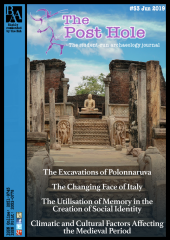

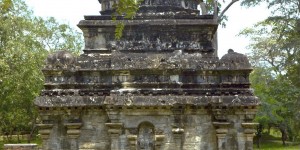
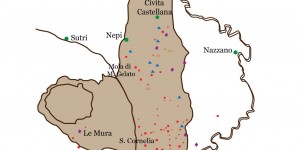
![A carved reindeer bone from a midden at Sumtangen (author’s own illustration). The runic inscription reads ‘ottar a’ (Óttár owns [this]). These name tags with a personal name and the verb ‘a’ are commonly found in middens in Norwegian towns (Indrelid and Hufthammer 2011, 45).](https://theposthole.org/sites/theposthole.org/files/styles/article_thumb/public/articles/_temp_thumbs/Owen%20Image%201.png?itok=sFxpxvar)
